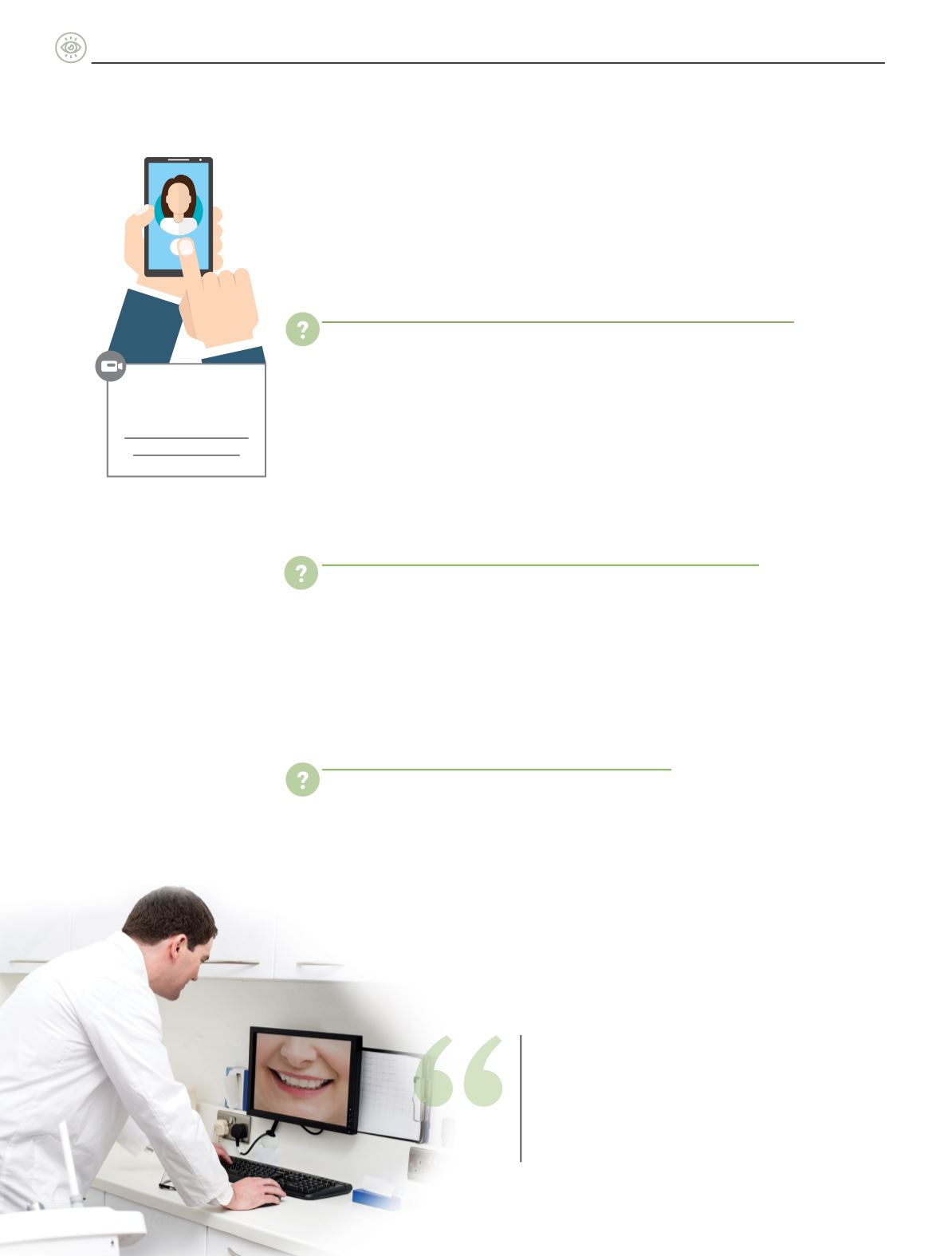

24
|
Volume 3 Issue 6
I
ssues and
P
eople
me on their app, we could talk about their concerns, and they might even be able to take a
picture with an intraoral camera hooked up to their phone. Once they’re in the office and
a diagnosis is made, I could provide an interactive education package that allows them to
communicate with me about the implications of their treatment choices. That’s the level of
interaction that teledentistry would support.
With the proliferation of dental therapists in the U.S. and the expanded scope of dental
hygienists, we have to ask ourselves what the role of a dentist is now? Our expertise as
dentists is in diagnosis, communications and patient education. Teledentistry applications
should support the dentist in sharing their expertise with the patient and other health care
providers.
How can dental associations help prepare dentists for teledentistry?
The number one thing we can do is share knowledge about practices and about what
you’re doing. I think there needs to be recognition that we need to support big data in
dentistry. We have a gold mine of knowledge in our practice management solutions that
could provide us with excellent decision-making tools, and yet associations do not seem
to access that knowledge or know how to use it effectively. Why do we not have real-time
analytics for the profession? Real time analytics would help a dentist answer the following
questions in real time with certainty: Am I paying my staff proper wages for the area I’m in?
Am I competitive? How many patients did you see, and what were the diagnoses? It’s about
connecting our practices together and understanding how to look at the data.
Do you think solo practitioners will be reluctant to share data?
I understand why some may feel nervous about it, but in an era where corporate dentistry
is starting to take off, those corporate dentistry agencies are making decisions based
on numbers from many practices at once. So if we want to stay in the age of the solo
practitioner being in charge of their own domain, they have to be empowered with the
knowledge of their group or association. In dentistry we don’t have the analytics base that
would enable us to provide better services in the long run. The problem with practising as a
solo practitioner now is that you’re blind to the rest of the world.
What can dentists do to prepare for teledentistry?
One thing is to change our mindset. We are no longer the owners of dental knowledge.
Google owns dental knowledge these days; any patient can look up what a filling is, what a
crown is, what a periodontal procedure is. Rather, we are the facilitators of knowledge. We
facilitate by helping patients understand the implications of the treatment they are choosing
or not choosing, by making a proper diagnosis and providing treatment options. It’s really
understanding the needs of your patients and trying to support them; how can I empower
the patient with more knowledge, more ideas.
a
To watch the interview
with Dr. Glaizel visit
oasisdiscussions.ca /2016/06/17/td-4Our expertise as dentists is in diagnosis,
communications and patient education.
Teledentistry applications should support the
dentist in sharing their expertise with the patient
and other health care providers.
















